Brighter Future: Multi-Functional Community Center for Inca Trail Porters. Help us help others. Ian Taylor Trekking has been supporting the needs of local communities for the past 17 years. After climbing Mount Everest in 2008, Ian and friend raised $100,000 to build the Mount Everest school in Uganda with charity Fields of Life.
Much More Than Trekking
The Ian Taylor Trekking mission is much more than trekking, as we work to help our staff develop local businesses and improve their skills. With support of our clients, we have built four schools in Nepal and we are currently raising $70,000 to build a medical facility in Goli village Nepal. DONATE to this project in Peru.
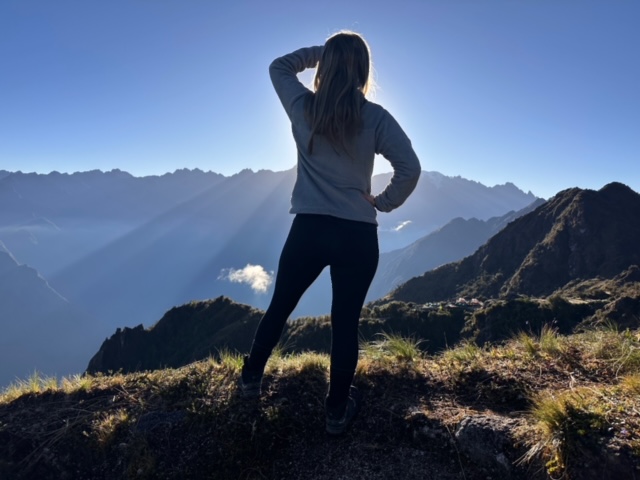
The Famous Trek to Machu Picchu
If you have been on one of our famous Classic Inca trail treks, your trek has been facilitated by superhuman porters carrying our personal gear, chairs, quality food, toilet tents and allowing embrace the challenging and inspiring trail to Machu Picchu.
We work with the same community of porters from the district of Calca and the community of Queullococha for all our Inca trail treks and you are directly supporting the community as we pay 25% more to our porters than other companies.
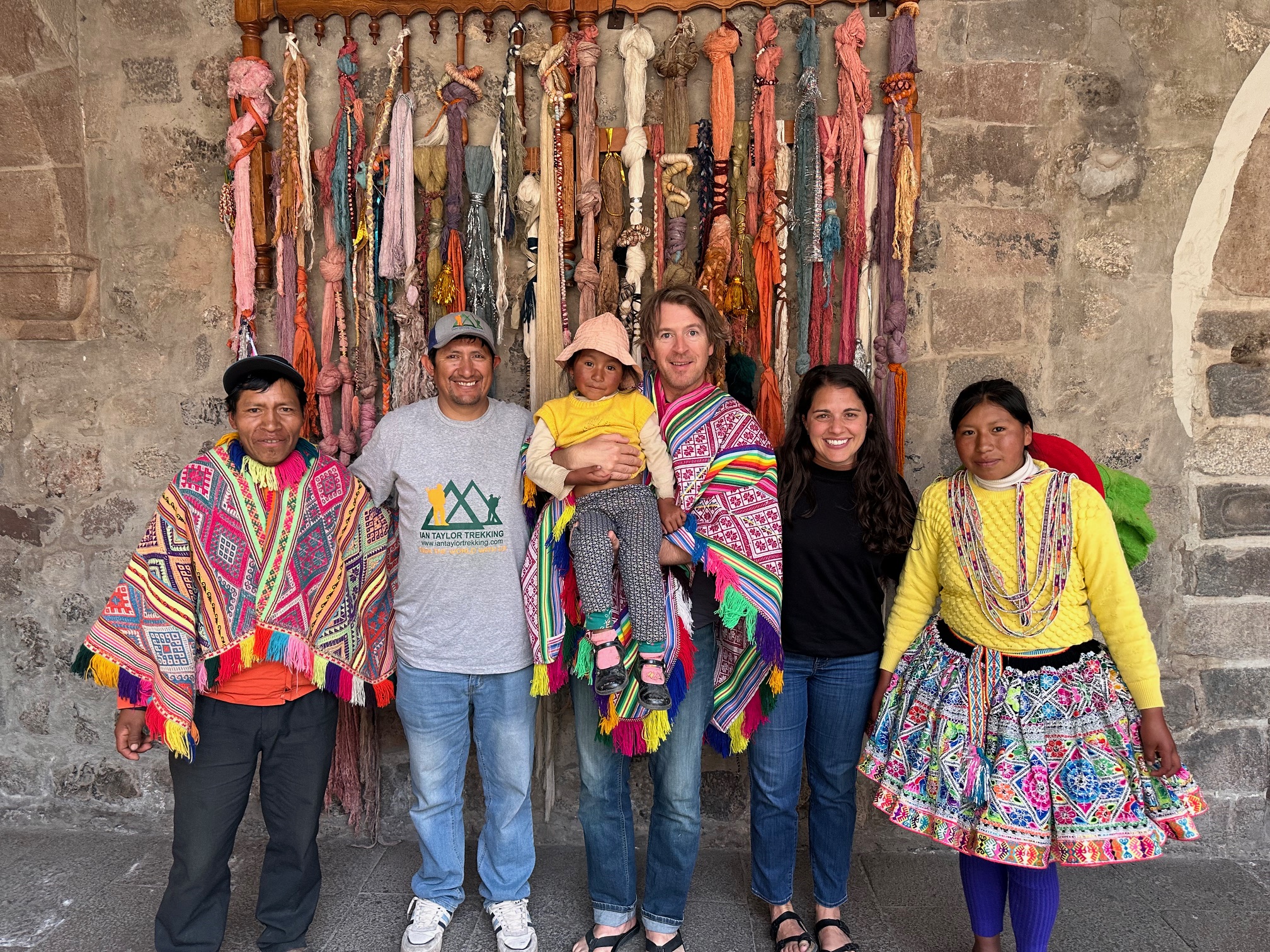
The Village of Queullococha
This remote community is nestled in the heart of the Peruvian Andes, in the Calca district in the town of Queullococha. This remote mountain community have been sending people to the famous Inca Trail to Machu Picchu for the past 30 years.
This region of Peru is steeped in rich cultural heritage and breathtaking natural beauty.
However, despite their historical significance and the influx of trekkers visiting this iconic region, these communities often face numerous challenges that impede their development and well-being.
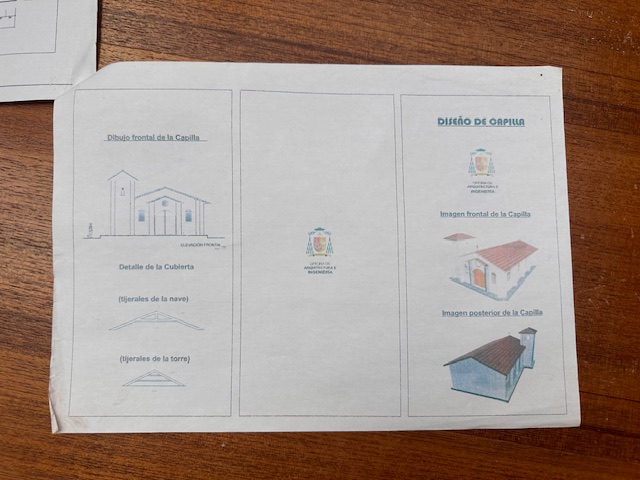
Let’s Build a Church
We, as experts leading treks on the Inca Trail, are committed to giving back to this community that enrich our journeys. We have a few goals to reach, but the community came to us looking for help to raise $25,000 to build a multi-functional church and community center. This facility will serve as a hub for education, health, and social interaction, transforming the lives of the villagers in profound and lasting ways.
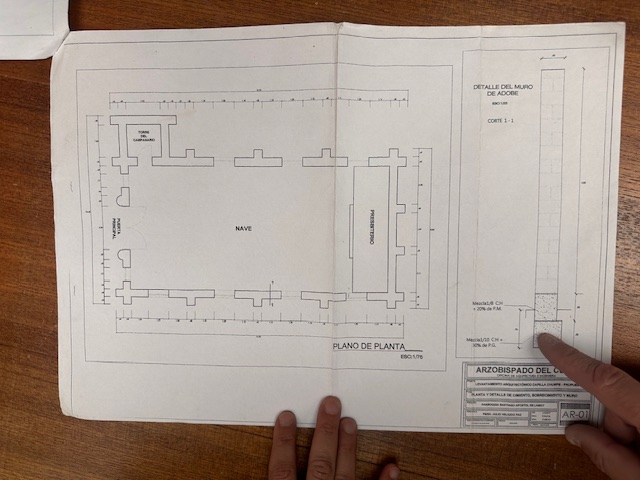
We Need Your Help!
We are aiming to raise $25,000 to build a multifunctional church and community center. This remote community of Huarqui, located in the Queullococha district, province of Calca, Peru gets no support. This community, established in 1950, is situated 59 miles, 95 km from Cusco. The village sits at an altitude of 4,260m/ 13,976 feet above sea level. The residents, who speak Quechua, comprise 44 families with a total population of 210 people.
Due to the high altitude, their economy is primarily based on cultivating various types of potatoes and oats, resulting in limited economic resources. The construction of this multipurpose facility will significantly benefit the community by providing a central place for gatherings, cultural activities, and social support.
Location Details
You can find the location of the community on google maps.
- Google Map Link
- Coordinates: -13.292242856340124, -71.76267686941219
Your donation will help us create a vital space for the Huarqui community to thrive and grow. Thank you for your generosity!
The Benefits of a Multi-Functional Community Center
A multi-functional community center offers a myriad of benefits that can catalyze positive change for the residents of these remote mountain communities. Here, we explore how such a facility can enhance various aspects of their lives:
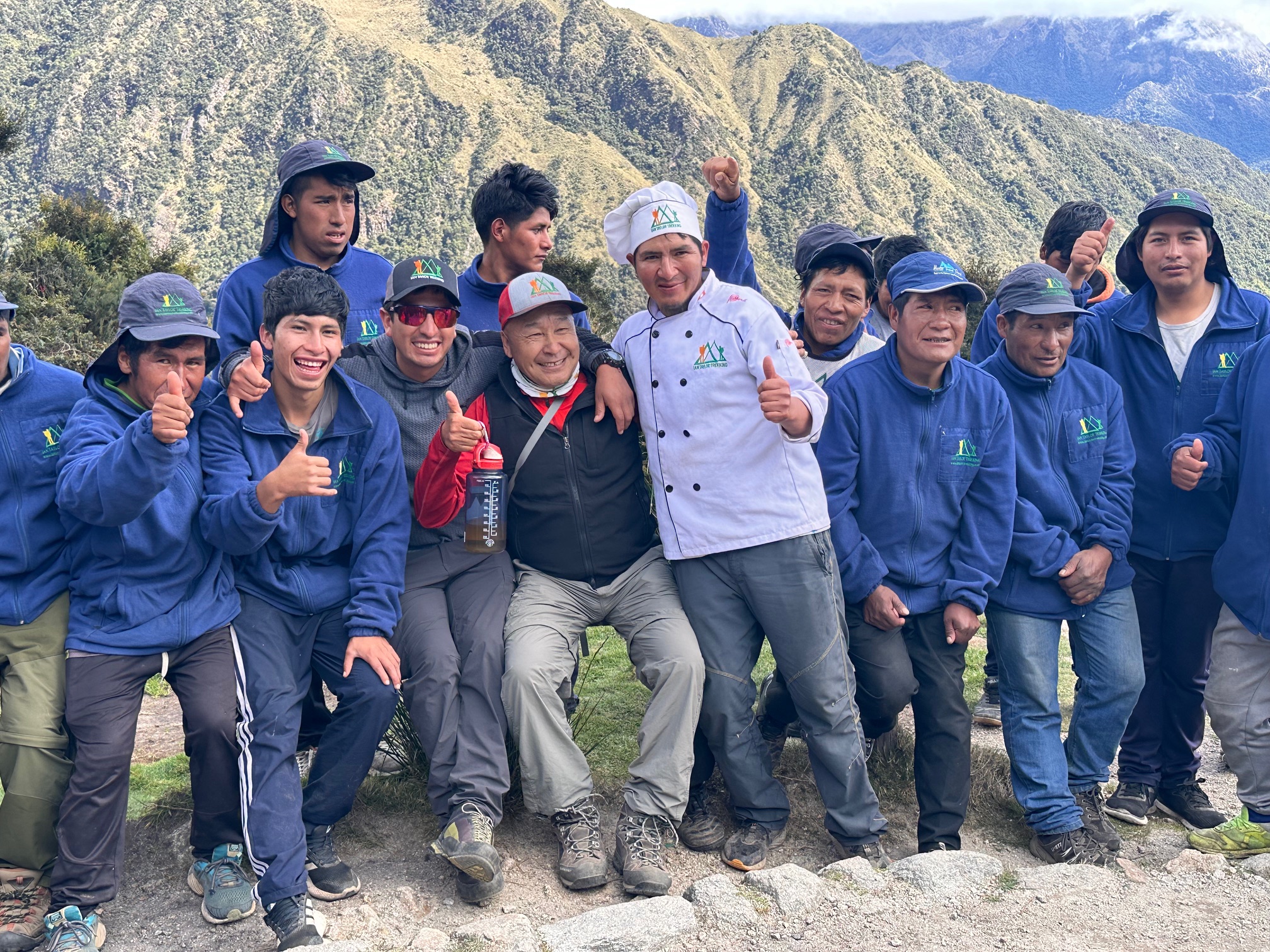
1). Educational Opportunities
Education is a cornerstone of development and empowerment. In many remote areas, access to quality education is limited, with children often having to travel long distances to attend school.
A community center equipped with a library, classrooms, and internet access can:
• Provide Local Educational Facilities: By bringing education closer to home, children can attend school more regularly and perform better academically.
• Adult Education Programs: Adults can participate in literacy classes, vocational training, and skill development workshops, opening new avenues for employment and economic stability.
• Technology Access: With internet facilities, both children and adults can access a wealth of information and online courses, bridging the digital divide and enhancing learning opportunities.
2). Health and Well-being
Health is another critical area where the community center can make a significant impact. Remote villages often have limited access to healthcare services, leading to preventable illnesses and health issues.
The community center can:
• Host Medical Clinics: Regular visits from doctors, dentists, and other healthcare professionals can provide much-needed medical care and preventive services.
• Health Education: Workshops on nutrition, hygiene, and disease prevention can empower villagers to take charge of their health.
• Mental Health Support: A safe space for counseling and support groups can help address mental health issues, reducing stigma and promoting emotional well-being.
3). Social and Cultural Enrichment
A community center can serve as a focal point for social and cultural activities, fostering a sense of unity and pride among villagers. Benefits include:
• Cultural Preservation: Spaces for traditional music, dance, and crafts help preserve and celebrate the community’s rich cultural heritage.
• Community Gatherings: The center can host events, festivals, and meetings, strengthening social bonds and promoting communal harmony.
• Youth Engagement: Recreational activities and clubs can keep young people engaged, providing healthy outlets for their energy and creativity.
Challenges Faced by Remote Mountain Communities
While the benefits are clear, it’s essential to acknowledge the challenges that these communities face, which our project aims to address:
1). Geographic Isolation
The remoteness of these villages makes accessing basic services and resources difficult. The rugged terrain and lack of infrastructure exacerbate this isolation, leading to:
• Limited Healthcare Access: Villagers often have to travel for hours to reach the nearest clinic or hospital, delaying treatment and exacerbating health issues.
• Educational Barriers: Schools are few and far between, and the journey to attend them can be arduous and unsafe for children.
• Economic Challenges: Isolation limits economic opportunities, making it hard for families to break the cycle of poverty.
2). Lack of Infrastructure
Infrastructure in these remote areas is often underdeveloped, impacting various aspects of daily life:
• Poor Roads and Transportation: The lack of reliable transportation infrastructure hampers access to markets, healthcare, and educational facilities.
• Inadequate Water and Sanitation: Clean water and proper sanitation facilities are often lacking, leading to health problems.
• Energy Shortages: Limited access to electricity restricts opportunities for education, communication, and business.
3). Socioeconomic Challenges
Economic hardship is a significant issue, with many families relying on subsistence farming and low-paying jobs in tourism. This economic vulnerability leads to:
• Food Insecurity: Limited agricultural productivity and market access can result in food shortages and malnutrition.
• Unemployment and Underemployment: The lack of diverse economic opportunities forces many to depend on unstable income sources.
• Migration: In search of better opportunities, young people often leave their communities, leading to depopulation and loss of cultural continuity.
Opportunities for Sustainable Development
Despite these challenges, there are numerous opportunities to foster sustainable development and improve the quality of life for these remote communities:
1). Community-Led Initiatives
Empowering the community to take charge of their development is crucial. The community center can be a catalyst for:
• Local Governance: Training in leadership and governance can help villagers manage their resources and development projects effectively.
• Cooperatives: Forming cooperatives for agriculture, crafts, and tourism can improve income stability and community cohesion.
• Microfinance Programs: Providing small loans can help villagers start or expand businesses, fostering economic growth.
2). Sustainable Tourism
Leveraging the popularity of the Inca Trail and Machu Picchu, sustainable tourism can be a significant driver of development:
• Eco-Tourism: Promoting environmentally friendly tourism practices can attract conscientious travelers and provide income while preserving natural resources.
• Cultural Tourism: Showcasing traditional crafts, music, and dance can attract tourists interested in cultural experiences, generating income and preserving heritage.
• Community-Based Tourism: Encouraging tourists to stay in local homes and participate in community activities can provide direct economic benefits to villagers.
3). Environmental Conservation
The natural beauty of the region is a valuable asset. Protecting the environment through conservation initiatives can ensure long-term sustainability:
• Reforestation Projects: Planting trees can combat soil erosion, improve water retention, and enhance biodiversity.
• Sustainable Agriculture: Promoting organic farming practices can improve food security and protect the environment.
• Renewable Energy: Implementing solar or wind energy solutions can provide reliable power without harming the environment.
Holistic Development
Meeting Physical, Emotional, and Spiritual Needs
Our vision for the community center extends beyond physical infrastructure. We aim to create a space that nurtures the physical, emotional, and spiritual well-being of the villagers:
1). Physical Needs
Addressing the basic physical needs of the community is paramount. The center will:
• Provide Medical Services: Regular health camps and a dedicated space for medical emergencies.• Ensure Clean Water and Sanitation: Installing water purification systems and proper sanitation facilities.
• Promote Nutrition: Education on healthy eating and access to nutritious food.
2). Emotional Well-being
A supportive community environment is vital for emotional health. the community truly understand that together is better and they want nothing more than to have a place to meet, learn and grow together. The center will:
• Offer Counseling Services: Providing a safe space for individuals to discuss their problems and seek guidance.
• Organize Support Groups: Facilitating peer support for various issues like domestic violence, addiction, and grief.
• Host Recreational Activities: Organizing sports, arts, and cultural events to boost morale and provide stress relief.
3). Spiritual Growth
Christian Faith is an integral part of the cultural fabric of these mountain communities in Peru. All our staff have asked for is a church and center to support the growth of their community. This facility will do the following:
• Provide a Space for Reflection: A quiet area for meditation and prayer, for the whole community to be able to come together.
• Celebrate Cultural Traditions: Hosting ceremonies and festivals that honor traditional beliefs and practices.
• Encourage Mindfulness Practices: Workshops on mindfulness and traditional healing practices to promote holistic health.
How You Can Help
Our goal of raising $25,000 for the community center is ambitious but achievable with your support. Please DONTATE HERE. Here are additional ways you can contribute to this transformative project:
1). Donations
Every contribution, big or small, brings us closer to our goal. Your donations will directly fund the construction and operation of the community center. 90% of funds will go directly to this project. 10% for on the ground local administration. Ian Taylor Trekking will take 0% of the funds raised for this project.
2). Fundraising Events
Organize or participate in fundraising events such as charity runs, bake sales, or online campaigns to raise awareness and funds for the project.
3). Volunteering
Offer your time and skills to help with construction, teaching, healthcare, or organizing community activities. Your expertise can make a significant difference.
4). Buy Local Products from this Community
When you visit Peru our staff can showcase some items for purchase and you will again directly support this remote community and enhance the lives of our team.
5). Spread the Word
Share our mission with your friends, family, and social networks. Raising awareness is crucial to garnering the support needed to make this project a reality. Feel free to share this page.
Help us Help Others
The construction of a multi-functional community center in a remote mountain village along the Inca Trail to Machu Picchu is not just a building project. It is a beacon of hope and a testament to the power of community and solidarity.
This center will address critical needs, provide opportunities for growth, and foster a sense of unity and pride among the villagers. By supporting this project, you are not only contributing to the physical structure but also to the brighter future of an entire community.
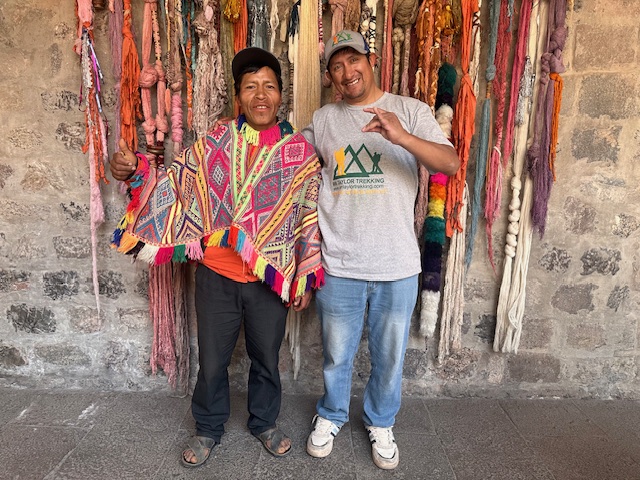
Multi-Functional Community Center for Inca Trail Porters
Together, we can make a lasting impact that resonates through generations, empowering the villagers to lead healthier, more prosperous, and more fulfilling lives. We look forward to seeing you on one of our trips in Peru. Join our private Facebook group.

